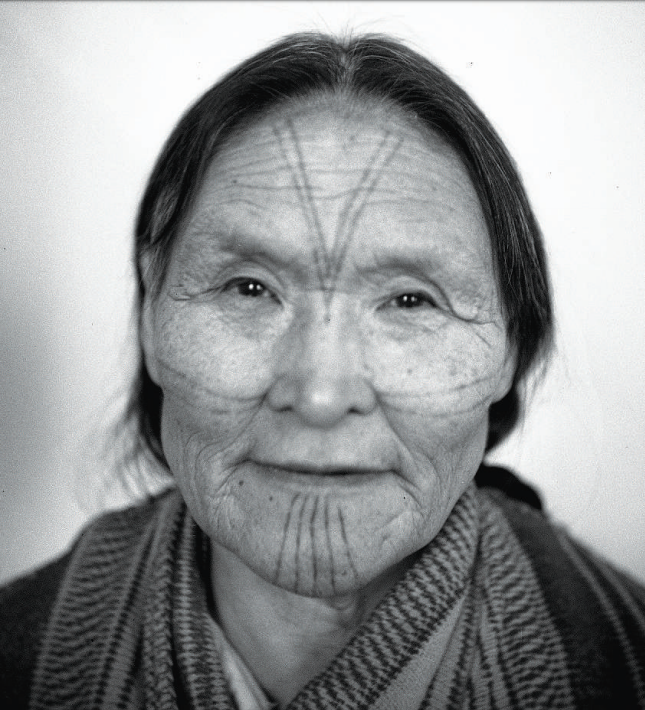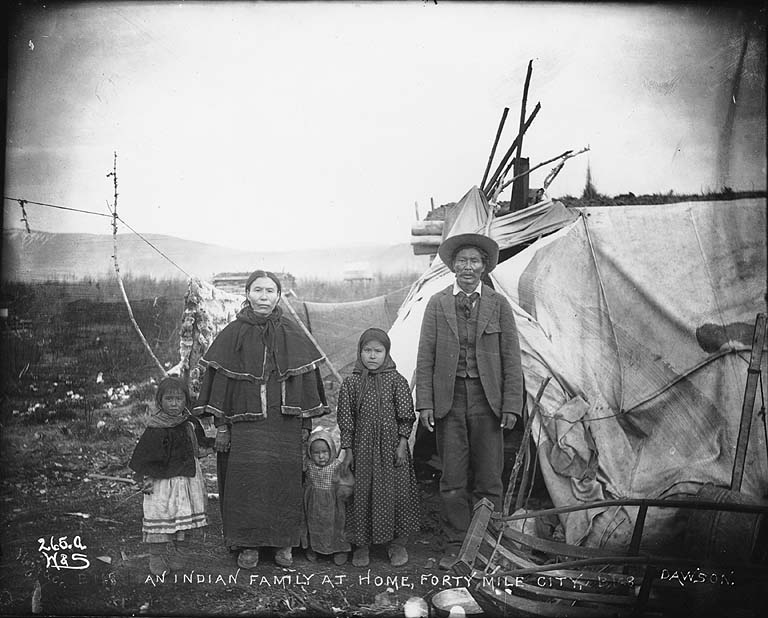|
Tavlugun
The tavluġun is an indigenous Iñupiaq chin tattoo A tattoo is a form of body modification made by inserting tattoo ink, dyes, and/or pigments, either indelible or temporary, into the dermis layer of the skin to form a design. Tattoo artists create these designs using several tattooing ... worn by women. See also * Kakiniit * Yidįįłtoo, the traditional face tattoos of the Hän Gwich’in. References {{Tattoo Inupiat culture Tattooing traditions Tattoo designs ... [...More Info...] [...Related Items...] OR: [Wikipedia] [Google] [Baidu] |
Kakiniit
Kakiniit ( iu, ᑲᑭᓐᓃᑦ ; sing. ''kakiniq'', iu, label=none, ᑲᑭᓐᓂᖅ) are the traditional tattoos of the Inuit of the North American Arctic. The practice is done almost exclusively among women, with women exclusively tattooing other women with the tattoos for various purposes. Men could also receive tattoos but these were often much less extensive than the tattoos a woman would receive. Facial tattoos are individually referred to as tunniit ( iu, label=none, ᑐᓃᑦ), and would mark an individual's transition to womanhood. The individual tattoos bear unique meaning to Inuit women, with each individual tattoo carrying symbolic meaning. However, in Inuinnaqtun, kakiniq refers to facial tattoos. Historically, the practice was done for aesthetic, medicinal purposes, part of the Inuit religion, and to ensure the individual access to the afterlife. Despite persecution by Christian missionaries during the 20th century, the practice has seen a modern revival by organiz ... [...More Info...] [...Related Items...] OR: [Wikipedia] [Google] [Baidu] |
Yidįįłtoo
Yidiiltoo or Yidįįłtoo are the traditional face tattoos of Hän Gwich’in women, who are indigenous to Alaska and Canada. History The practice dates back at least 10,000 years. Traditionally girls of the Hän Gwich’in receive their first tattoos between the ages of 12 and 14, often at first menstruation. Missionaries of the 1800s and 1900s banned the traditional practice along with other cultural traditions. Starting in the 2010s, some indigenous girls and women began to reclaim the tradition. Description Typical markings include vertical lines from lower lip that extend to beneath the chin. According to tattoo anthropologist Lars Krutak, the width of the lines and the spacing between them were traditionally associated with which of the nine groups of Hän Gwich’in the girl was from. Other markings may be created on the temple or cheeks. Method of application The traditional method is a stick-and-poke using needles made from bird bones. Some modern pract ... [...More Info...] [...Related Items...] OR: [Wikipedia] [Google] [Baidu] |
Face Tattoo
A face tattoo or facial tattoo is a tattoo located on the bearer's face or head. It is part of the traditional tattoos of many ethnic groups. In modern times, although it is considered taboo and socially unacceptable in many cultures, as well as considered extreme in body art, this style and placement of tattoo has emerged in certain subcultures in recent years. This is due to the continuing acceptance of tattoos and the emergence of hip-hop culture popularizing styles such as the teardrop tattoo. Traditions Face tattooing is traditionally practiced by many ethnic groups worldwide. As indicator of status, maturity, or beauty Ainu The Ainu people of northern Japan and parts of Russia, including Sakhalin, the Kuril Islands and Kamchatka Krai, have a practice of facial tattooing exclusive to women, in which a smile is inked around the mouth to prevent spirits from entering the body through the mouth. This form of tattooing also serves a secondary purpose of showing maturity. ... [...More Info...] [...Related Items...] OR: [Wikipedia] [Google] [Baidu] |
Eskimo Woman With Chin Tattoo Wearing Fur Parka, Nome, Alaska, 1903 (AL+CA 6117)
Eskimo () is an exonym used to refer to two closely related Indigenous peoples: the Inuit (including the Alaska Native Iñupiat, the Greenlandic Inuit, and the Canadian Inuit) and the Yupik (or Yuit) of eastern Siberia and Alaska. A related third group, the Aleut, which inhabit the Aleutian Islands, are generally excluded from the definition of Eskimo. The three groups share a relatively recent common ancestor, and speak related languages belonging to the Eskaleut language family. These circumpolar peoples have traditionally inhabited the Arctic and subarctic regions from eastern Siberia (Russia) to Alaska (United States), Northern Canada, Nunavik, Nunatsiavut, and Greenland. Many Inuit, Yupik, Aleut, and other individuals consider the term ''Eskimo'', which is of a disputed etymology, to be unacceptable and even pejorative. Eskimo continues to be used within a historical, linguistic, archaeological, and cultural context. The governments in Canada and the United States have ... [...More Info...] [...Related Items...] OR: [Wikipedia] [Google] [Baidu] |
Iñupiat
The Iñupiat (or Inupiat, Iñupiaq or Inupiaq;) are a group of Alaska Natives, whose traditional territory roughly spans northeast from Norton Sound on the Bering Sea to the northernmost part of the Canada–United States border. Their current communities include 34 villages across ''Iñupiat Nunaat'' (Iñupiaq lands) including seven Alaskan villages in the North Slope Borough, affiliated with the Arctic Slope Regional Corporation; eleven villages in Northwest Arctic Borough; and sixteen villages affiliated with the Bering Straits Regional Corporation,"Inupiaq (Inupiat)—Alaska Native Cultural Profile." ''www.nnlm.nlm.nih.gov'' ''National Network of Libraries of Medicine.'' Retrieved 4 Dec 2013. and often claim to be the first people of the [...More Info...] [...Related Items...] OR: [Wikipedia] [Google] [Baidu] |
Tattoo
A tattoo is a form of body modification made by inserting tattoo ink, dyes, and/or pigments, either indelible or temporary, into the dermis layer of the skin to form a design. Tattoo artists create these designs using several tattooing processes and techniques, including hand-tapped traditional tattoos and modern tattoo machines. The history of tattooing goes back to Neolithic times, practiced across the globe by many cultures, and the symbolism and impact of tattoos varies in different places and cultures. Tattoos may be decorative (with no specific meaning), symbolic (with a specific meaning to the wearer), or pictorial (a depiction of a specific person or item). Many tattoos serve as rites of passage, marks of status and rank, symbols of religious and spiritual devotion, decorations for bravery, marks of fertility, pledges of love, amulets and talismans, protection, and as punishment, like the marks of outcasts, slaves and convicts. Extensive decorative tattooing ... [...More Info...] [...Related Items...] OR: [Wikipedia] [Google] [Baidu] |
Gwichʼin
The Gwichʼin (or Kutchin) are an Athabaskan-speaking First Nations people of Canada and an Alaska Native people. They live in the northwestern part of North America, mostly above the Arctic Circle. Gwichʼin are well-known for their crafting of snowshoes, birchbark canoes, and the two-way sled. They are renowned for their intricate and ornate beadwork. They also continue to make traditional caribou-skin clothing and porcupine quillwork embroidery, both of which are highly regarded among Gwichʼin. Today, the Gwich’in economy consists mostly of hunting, fishing, and seasonal wage-paying employment. Name Their name is sometimes spelled ''Kutchin'' or ''Gwitchin'' and translates as "one who dwells" or "resident of region" Historically, the French called the Gwichʼin ''Loucheux'' ("squinters"), as well as ''Tukudh'' or ''Takudh'', a term also used by Anglican missionaries. Sometimes, these terms may refer (explicitly or implicitly) to particular dialects of the Gwichʼin ... [...More Info...] [...Related Items...] OR: [Wikipedia] [Google] [Baidu] |
People (magazine)
''People'' is an American weekly magazine that specializes in celebrity news and human-interest stories. It is published by Dotdash Meredith, a subsidiary of IAC. With a readership of 46.6 million adults in 2009, ''People'' had the largest audience of any American magazine, but it fell to second place in 2018 after its readership significantly declined to 35.9 million. ''People'' had $997 million in advertising revenue in 2011, the highest advertising revenue of any American magazine. In 2006, it had a circulation of 3.75 million and revenue expected to top $1.5 billion. It was named "Magazine of the Year" by ''Advertising Age'' in October 2005, for excellence in editorial, circulation, and advertising.Martha Nelson Named Editor, The People Group , a January 200 ... [...More Info...] [...Related Items...] OR: [Wikipedia] [Google] [Baidu] |
Tattooing Traditions
A tattoo is a form of body modification made by inserting tattoo ink, dyes, and/or pigments, either indelible or temporary, into the dermis layer of the skin to form a design. Tattoo artists create these designs using several tattooing processes and techniques, including hand-tapped traditional tattoos and modern tattoo machines. The history of tattooing goes back to Neolithic times, practiced across the globe by many cultures, and the symbolism and impact of tattoos varies in different places and cultures. Tattoos may be decorative (with no specific meaning), symbolic (with a specific meaning to the wearer), or pictorial (a depiction of a specific person or item). Many tattoos serve as rites of passage, marks of status and rank, symbols of religious and spiritual devotion, decorations for bravery, marks of fertility, pledges of love, amulets and talismans, protection, and as punishment, like the marks of outcasts, slaves and convicts. Extensive decorative tattooing has al ... [...More Info...] [...Related Items...] OR: [Wikipedia] [Google] [Baidu] |






